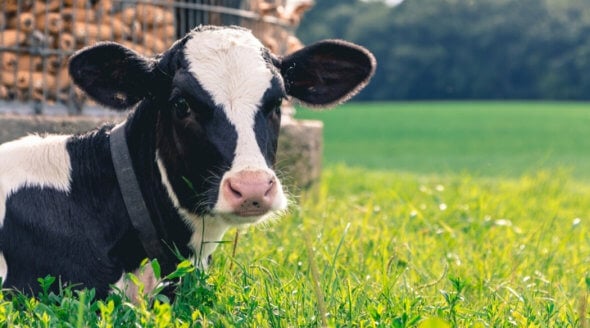Photos: ‘Bloody Snake’ Pushes Prada to Shed Exotic Skins
23 April 2024
Photos: ‘Bloody Snake’ Pushes Prada to Shed Exotic Skins
Milan – Fashion lovers hoping to peek inside the iconic Prada store in Galleria Vittorio Emanuele II today were left squirming when Italian singer and TV personality Daniela Martani – dressed head to toe in a “snakeskin” ensemble and oozing with “blood” – slithered up to the store entrance in a gruesome display to call out the luxury brand for selling the skin of snakes, ostriches, crocodiles, lizards, and other animals tortured and skinned alive for its bags and other accessories.
Photos from the action are available here and here. (Please credit Rossella Papetti.)
“Prada’s shelves are filled with products of animal suffering. Snakes, ostriches, crocodiles, and other wild animals endure a lifetime of misery before they are hacked to bits for clutches or clothes,” says Martani. “I’m proud to team up with PETA in calling on Prada to stop peddling purses made of the skin of abused animals.”
PETA entities have documented rampant cruelty at slaughterhouses that supply animal skin to the fashion industry – including workers inflating live snakes with water, bashing them with hammers, and cutting them with razors; hacking at crocodiles’ necks and shoving metal rods down their spines; and chopping live lizards’ heads off with machetes. A PETA exposé of the world’s largest ostrich-slaughter companies – including suppliers to Prada – revealed that young birds are crammed onto lorries and hauled to slaughterhouses, where they are electrically shocked and their throats are slit.
Ahead of Prada Group’s annual meeting on 24 April, Martani also posed a question via video message to Miuccia Prada on behalf of PETA US, a shareholder of the company. In the video, Martani asks the lead designer to explain the “glaring discrepancy” between the company’s ban on animal fur and its use of the skins of animals who were forced to languish in filthy facilities, beaten, and violently slaughtered, often while still conscious. The same question will be submitted at the meeting by a representative of PETA US.
A growing list of top designers – including Altuzarra, Burberry, Chanel, Diane von Furstenberg, Jean Paul Gaultier, Paco Rabanne, Victoria Beckham, and Vivienne Westwood – have banned the use of the skin of reptiles and other wildlife from their collections, and many more are offering vegan leather options made from pineapples, mushrooms, apples, cacti, and other innovative materials.
PETA – whose motto reads, in part, that “animals are not ours to wear” – opposes speciesism, a human-supremacist worldview.
For more information, please visit PETA.org.uk or follow the group on Facebook, X, TikTok, or Instagram.
Contact:
Jennifer White +44 (0) 20 7923 6244; [email protected]
#
Please find Daniela Martani’s question to Miuccia Prada below.
Hello. I’m Daniela Martani and I have a question on behalf of People for the Ethical Treatment of Animals for Mrs Miuccia Prada.
In 2019, PETA praised your announcement that Prada Group was banning fur – which comes from animals who are farmed in cramped conditions, denied the opportunity to engage in natural behaviour, and then violently killed by gassing, genital electrocution, or breaking their neck – to meet the demand for ethical products.
Yet today, Prada Group continues to make accessories from exotic skins, which similarly come from animals who are farmed in cramped conditions, denied the opportunity to engage in natural behaviour, and then violently killed. Snakes are bashed over the head with hammers, pumped full of water, and skinned – likely while they’re still conscious. Crocodiles are stabbed in the neck, and a metal rod is rammed down their spine while they’re still alive. Young ostriches are violently handled before workers cut their throat. Lizards are decapitated with machetes, and their unique physiology means that they remain fully aware and endure intense pain and psychological stress for over 30 minutes after being beheaded.
Mrs Prada, as the creative force behind Prada Group’s collections, will you please explain the rationale behind this glaring discrepancy in the company’s stance on fur and exotic skins?

